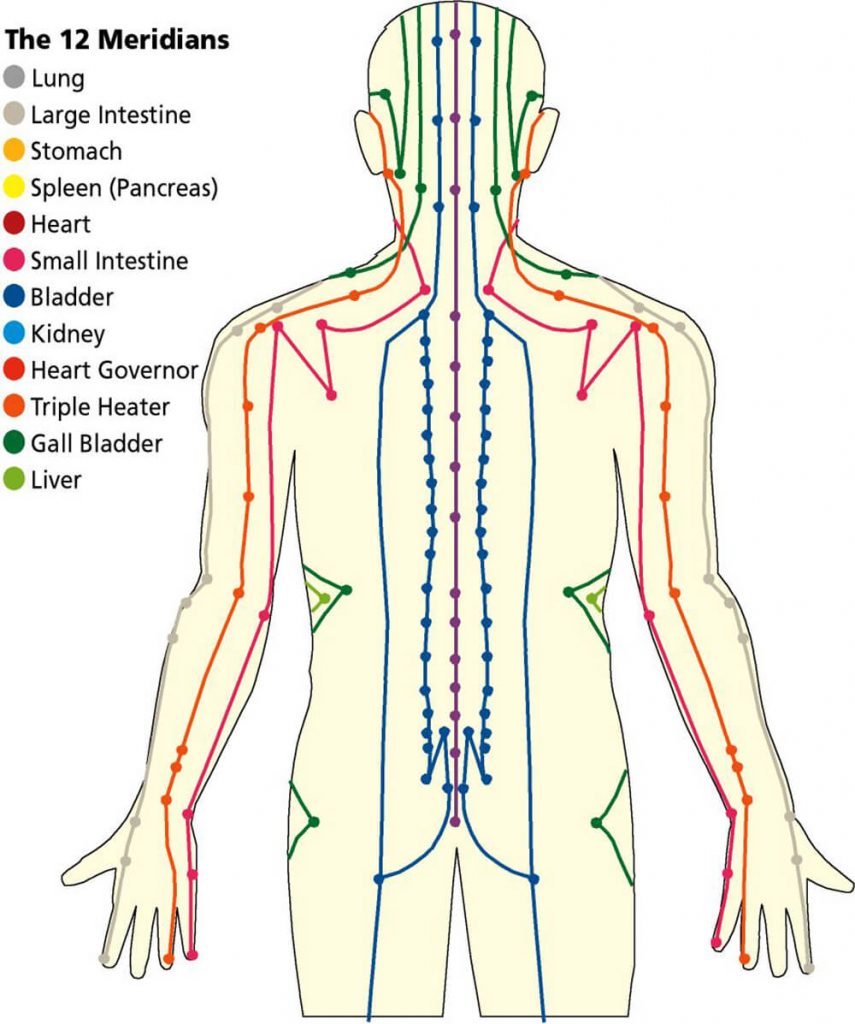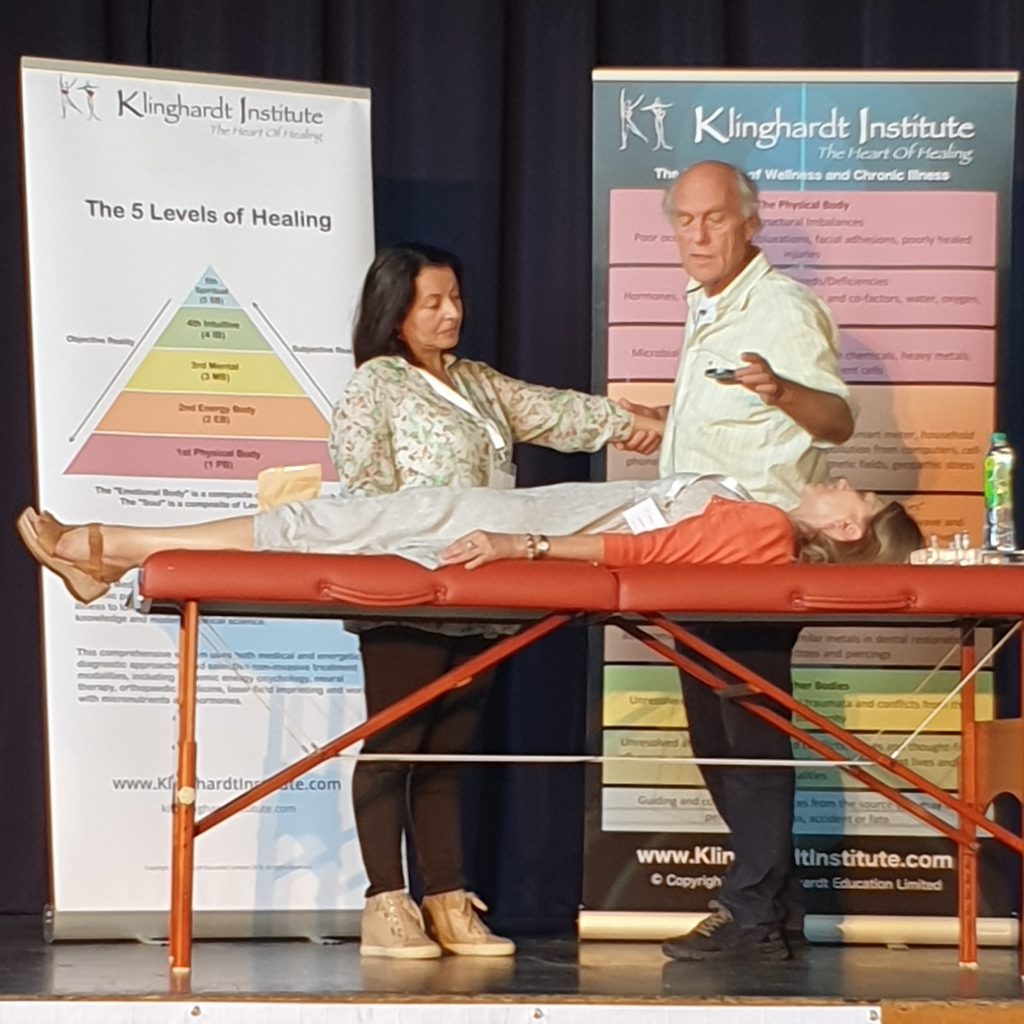What is Kinesiology? My experience recovering from Chronic Fatigue Syndrome

Kinesiology is one of the most controversial, confusing and underated techniques in the ‘alternative’ health community.
In this article I explore the origins of Kinesiology and explain why it may have a place when addressing chronic health issues. I’ll also share my personal story of how kinesiology helped me recover from chronic fatigue syndrome.
What is Kinesiology?
Kinesiology is an ‘umbrella term’ for a group of specialised techniques used to facilitate the healing process (1, 2).
Note: In sport science ‘circles’ kinesiology is the study of muscles, and you may come across kinesiology tapes and other things used to support and optimise muscle function.
Essentially, Kinesiology is simply a tool that combines Chiropractic knowledge and Traditional Chinese Medicine theory, to identify the physical, nutritional, emotional or energetic barriers to health.
A kinesiologist does not diagnose or treat; instead finds imbalances and identifies what interventions will bring the system back into balance.
Before we explore the how’s, let’s take a look into the history of Kinesiology:
History of Kinesiology
It is said, Kinesiology stemmed from ‘manual muscle testing’ which was devised by Swedish physiotherapists in 1860 to assess the function of muscle groups (3).
Some of these Swedish physiotherapists moved to Boston and in 1920 word spread to Dr Robert Lovett, an orthopaedic surgeon based at Harvard (4).
Dr Lovett began using a technique he described as ‘muscle monitoring’ to trace spinal nerve damage caused by injury and Polio.
Dr Frank Chapman
In the 1930’s, osteopath, Frank Chapman, began observing ‘discreet, tender, nodules’ in specific ares of the body that seemed to relate to the patient’s diagnosis. When these areas were vigorously massaged, the condition was observed to improve. (These areas are what we now know form the lymphatic system) (5).
Dr George Goodheart
In the 1960s, American chiropractor Dr George Goodheart was building a name for himself, as he refuted the then held theory that muscle spasm was the primary cause of back pain (6).
Unaware of Chapman’s observations, Dr Goodheart believed There were five systems to consider in the evaluation of body function: the vascular system, the lymphatic system, the nervous system, the cerebrospinal fluid and acupuncture system.
Goodheart believed that dysfunction anywhere in the body may be caused by a failure of any of these five systems and manual muscle testing (testing the function and health of a muscle pair) provided important clues to function. He believed that each muscle pair corresponded with a particular system (gut, liver, lymphatic, brain etc…) based on the meridian charts from TCM.

He later began to observe that the introduction of ‘noxious’ or beneficial substances caused a weakening or strengthening of these ‘indicator’ muscle pairs.
Dr John Diamond
In the 1970’s Dr John Diamond, expanded this theory discovering, ‘indicator muscles’ would strengthen or weaken in response to ‘positive’ or ‘negative’ emotional and intellectual stimuli. He coined this practice ‘Behavioural Kinesiology’ (7).
Conscious Independence
It’s important to note that supposedly Dr Goodheart and Dr Diamond believed this phenomenon occurs independently of the test subject’s own opinion or knowledge of the topic. Essentially, they believed the body ‘knew’ at a level far below ‘consciousness’ (8).
The Birth of Applied Kinesiology
In 1973, the technique of Applied Kinesiology was born, and Dr Goodheart founded the College of Applied Kinesiology, which trained licensed health professionals.
Applied kinesiology arrived in the UK in 1975, and later became known as Systematic Kinesiology (9, 10).
Types of Kinesiology
Kinesiology is a rapidly expanding field and many practitioners have created their own permutations of it. These include (11):
- Creative Kinesiology
- Health Kinesiollgy
- Holistic Kinesiology
- OHB Kinesiology
- Neuroenergetic Kinesiology
- Optimum Health Balance
- Progressive Kinesiology
- Touch for Health Kinesiology
- Wellness Kinesiology
Confused?
Don’t worry to keep it simple I recommend either an Applied kinesiologist, ‘Touch for Health’ Kinesiologist, Holistic Kinesiologist or Autonomic Response Testing Practitioner.
What the hell is Autonomic Response Testing?
I would be remiss if I did not mention the work of Dr Dietrich Klinghardt in this field.
Note: I’m sorry this is quite a confusing topic, but this is the last bit of theory, before we dive into the ‘juice‘:

Dr Dietrich Klinghardt, a medical doctor and leader in nutrition and functional medicine, created his own version of applied kinesiology called Autonomic Response Testing (11, 12).
Although I am not familiar with all the nuances between these techniques, Klinghardt suggests his technique is better for several reasons:
In classical Kinesiology, organs and tissues are tested indirectly (via a specific muscle group), whereas ART ‘tests’ the organ directly.
Instead of testing remedies against an organ system, ART practitioners use ‘real diagnostic tools’ including microbial cultures, toxins etc…
Furthermore, there is a high risk with classical Kinesiology, that the practitioner can be testing themselves instead of the client (13).
To mitigate this risk, ART requires two people to test a client (a surrogate).
Unfortunately, Dr Klinghardt has removed his papers on ART from his website (for unknown reasons) but I have found a couple resources that summarise the theories behind it (14, 15).
The theory of ART
ART utilises changes in the body’s biophoton system. Each cell in our body emits ‘highly structured’ (coherent) light which communicates with neighbouring cells and organisms including life outside the body. This communication is bi-directional.
Healthy cells emit coherent or polarised light. Unhealthy cells and tissues emit non-coherent light- or none at all. ART accurately detects the status of coherence/non-coherence in any body area.
Klinghardt has mentioned a small scale study he published comparing findings from ART with various forms of AK. However, I cannot find this study. But in an interview, he mentioned that ART outperformed the others.
In 2014, the first randomised control study was conducted comparing AK technique with a ‘placebo’ technique in 51 people. Sadly, the study showed AK identified the known issue only 50% of the time. Critics have pointed out that in this study, AK was grouped together and not distinguished (16).
Why is Kinesiology relevant?
In the year 2021, we are limited by the number of tests we can offer a chronically unwell person. If we knew what to find and how to treat it, there would not be any chronic illness in the world!
Unfortunately many people with chronic fatigue and other chronic illnesses remain unwell due to the limitations of lab testing.
In my experience, Kinesiology or ART is the most effective tool because it has the potential to help find the root cause and help identify the specific remedies to address it safely and efficiently.
We cannot find something that we are not aware exists.
Even if I could order a complete array of tests which will total around 2-3k, they still provide limited amounts of information and most would not be relevant to your root cause. And they also don’t tell you what you need to fix it!
My current opinion is apart from medical lab tests, the only really useful tests are Viral and Lyme disease panels, classical stool tests like Biohealth 401H, occasionally DUTCH adrenal tests (more for confirmation) and toxicology screens such as Chris Shade’s Mercury Tri-test.
This will upset some, but most private laboratories are businesses, and it’s one of the most lucrative segments in healthcare. Tests are highly scalable with great margins.
Lab tests can promise a lot but often fail to deliver.
Caveat: Results depend on the Kinesiologist
Like the good scholar I am, I must always present the other side of the argument.
I know many people who have not benefited from seeing Kinesiologists, and that may be for many reasons including:
- The practitioners lack of ‘neutrality’ when testing.
- Egos and ‘Big Energies’ in the room can supposedly influence testing.
- Family or friends nearby with strong belief systems.
- The Client’s belief system and ‘openness’ plays an important part.
- Lack of ‘Connection’ (17).
My Experience Recovering from Chronic Fatigue Syndrome
This article is long enough, so I’ll keep it short and sweet. After several years of bouncing from doctors to therapists of all persuasions, I was close to ‘calling it quits’ in my journey. Through serendipity I met a nutritional therapist who specialised in chronic fatigue type conditions.
After taking my history and pouring through the heaps of lab tests, he said ‘Ok, take a seat over here’. ‘Why? I thought to myself’.
Once ‘setup’ he asked me to internally rotate my wrist inwards (my wrist being perpendicular to seat) and asked me to squeeze or adduct my arm towards myself.
He began asking questions trying to find the root of my issue: “Inder has dysbiosis?”, “Inder has a methylation issue?”, “Inder has a liver issue?”. My muscle remained weak as he was able to pull my arm away.
He then paused and took a deep breath, then with a shriek of excitement, asked “Inder has a viral infection?” my arm remained strong and he was unable to pull my arm away.
He then walked over to a table and picked up a small plastic box filled with glass vials. He placed them on my lap and my arm remained strong. He lifted up the box and stared at the vials for a few seconds, and then pulled three vials out. He placed them in my hand and I became weak. ‘Hmm’, he said, pausing to take a deep breath. He then put them back and took another one out and placed it in my hand. My arm became strong.
He then walked over to a table filled with around 100 plastic pouches containing all manner of tablets….from three types of vitamin C to Humic Acid to four different types of glutathione. He picked up 4 pouches almost at random and my arm stayed strong. He went on to identify the doses.
Suffice to say that was over five years ago, and it has been a treacherous journey filled with peaks and troughs and moments of desperation and elation. But I wholeheartedly believe, if it wasn’t for Kinesiology and the nutritional therapist who helped me, I wouldn’t be here today. In fact, I wouldn’t be here if it wasn’t for my health dream team.
P.S. If you’re wondering, that vial contained HHV-6. A few weeks later I had a blood test to confirm his finding.
I would like to leave you with a quote from ‘Power vs Force’ a book written by Dr David Hawkins in 1995:
“…, the individual human mind is like a computer terminal connected to a giant database. The database is human consciousness itself, of which our own consciousness is merely an individual expression, but with its roots in the common consciousness of all mankind. This database is the realm of genius; because to be human is to participate in the database, everyone, by virtue of their birth, has access to genius.“
Dr David Hawkins



5 Comments
Paulee Kestin · April 27, 2021 at 12:12 am
U said that your root cause was HHV-6. This is interesting and I too have this virus. I have often wondered if it could be my root cause. May I ask how it was treated?
Inder Singh Virdi BA (Hons) mBANT · August 11, 2021 at 2:39 pm
Hi Paulee, my apologies for the delay. In essence we used two or three different nutraceutical products such as humic acid to inhabit and lower my viral titre. I believed I would make a full recovery once the virus was addressed but I was wrong. It took another 2-3 years addressing various issues to recover from the viral legacy and the psycho-spiritual aspects of the condition. Hope this helps. Wishing you well on your path to health. Inder
Inder Singh Virdi BA (Hons) mBANT · August 17, 2021 at 10:39 am
Hi Paulee, the approach depends entirely on your individual needs but the core products were Humic acid, Takuna and Prolive. Inder
Hiro · October 11, 2025 at 10:37 am
Hello. I am an applied kinesiology practitioner for almost 20 years.
My son developed CFS after a viral infection.
We’ve been working for about 5 months consecutive treatments on my son. I talked to my friend who are also a chiropractor/applied kinesiologist about a manual muscle testing.
Since CFS patient’s has a functional problems in their brain, the MMT results are not accurate compared to those who doesn’t have that illness. Sometimes Switching will be appears, MMT results may reverse by the brain functional abnormalities.
So I would like to ask how you evaluate with MMT in this condition. The difficult part is not everything are reversed by the switching and brain function.
Inder Singh Virdi BA (Hons) MSc · November 10, 2025 at 2:38 pm
Hi Naruse, thank you for your message. This is absolutely correct and in our experience you need to identify and correct switching which Dr Dietrich Klinghardt taught us. You’ll also need to correct interference fields as well, which is a key missing part in the correction of these patients.